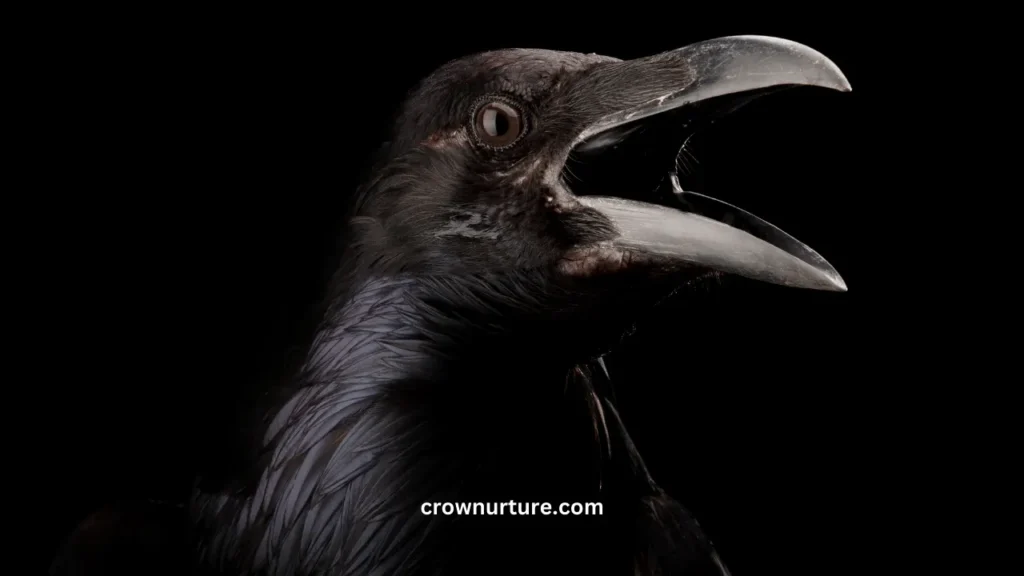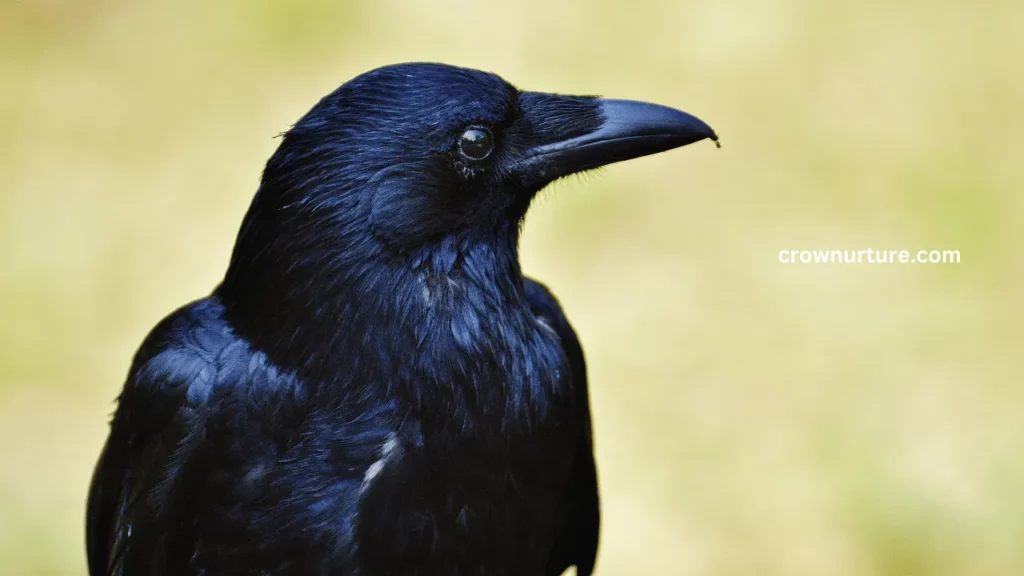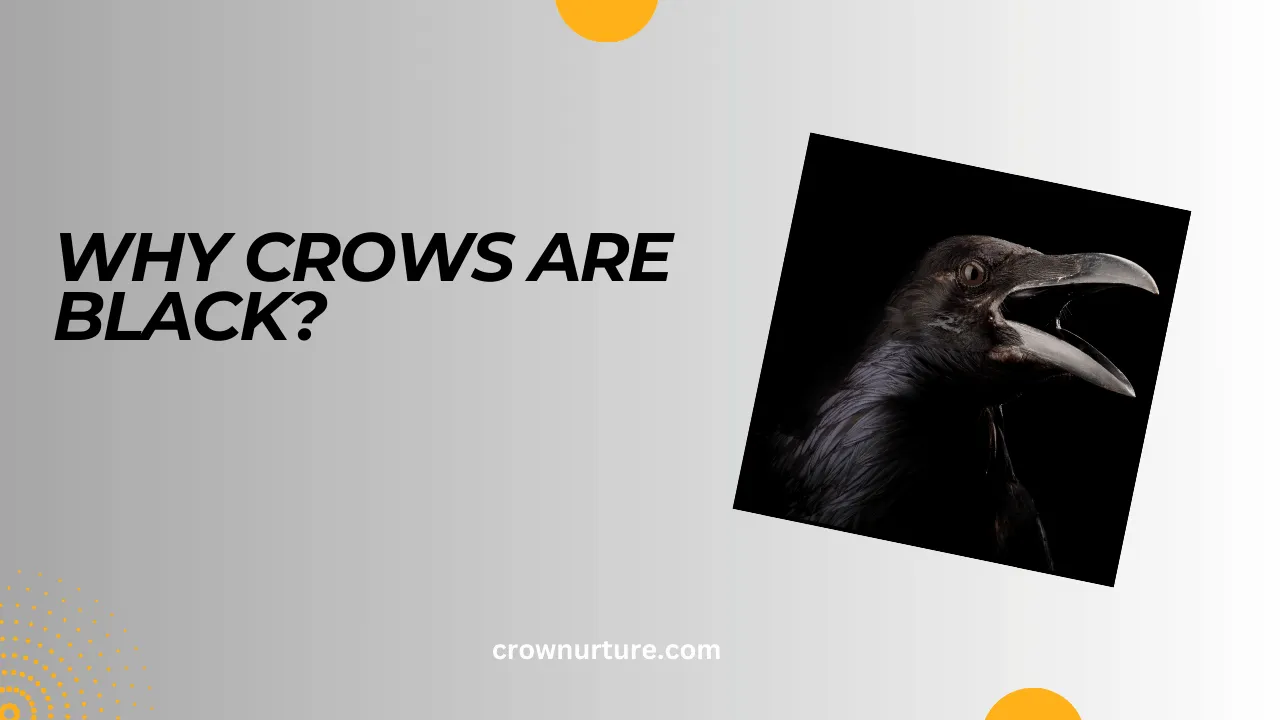Crows are among the most recognizable birds in the world, thanks to their glossy black feathers and distinct calls. This dark hue has intrigued humans for centuries, inspiring myths and raising questions about its purpose.
Why did evolution choose black for crows? Is it purely for survival, or does it have deeper meanings? The answer lies in a combination of biology, evolution, and environment.
Their black feathers are more than a simple aesthetic—they are a functional adaptation that aids in survival. From thermoregulation to social interactions, the black coloration offers multiple advantages.
Understanding why crows are black not only deepens our appreciation of nature but also sheds light on the fascinating ways species evolve to thrive in their environments.
Let’s explore this mystery, diving into the science, evolutionary benefits, and cultural significance of crows’ iconic black feathers.

Contents
1. The Role of Melanin in Feather Pigmentation
The black color of crow feathers comes from a pigment called eumelanin, a type of melanin produced by melanocytes in their skin. This pigment absorbs light, resulting in their deep black coloration.
Melanin doesn’t just give feathers their color; it strengthens them. Black feathers are more durable and less prone to damage from wear and tear, making them especially useful for a bird that flies extensively and faces harsh weather conditions.
Additionally, melanin provides protection against ultraviolet radiation, preventing the feathers from degrading under the sun’s rays. This added durability allows crows to maintain their appearance and functionality throughout the year.
2. Evolutionary Advantages of Black Coloration
The black coloration of crows provides several key advantages that have helped them thrive in various environments:
- Thermoregulation: Black feathers absorb heat from sunlight, which is especially beneficial in colder climates. This allows crows to stay warm, conserving energy that would otherwise be spent on generating body heat.
- Camouflage: In many habitats, particularly forests or urban areas with plenty of shadows, black feathers make crows less visible to predators and prey. This stealth is a significant survival tool.
- Social Signaling: The uniform black coloration helps crows recognize members of their species. It may also play a role in dominance displays, mate selection, and group cohesion.
These advantages explain why black plumage has persisted in crows across generations, cementing its evolutionary value.

3. The Impact of Environment and Genetics
While crows are uniformly black, environmental and genetic factors influence the intensity and sheen of their feathers:
- Environmental Factors: Sunlight, temperature, and diet can affect feather pigmentation. For instance, crows in sunnier regions might have shinier, more reflective feathers due to increased sunlight exposure, while those in colder climates may have feathers adapted for better insulation.
- Genetic Factors: Variations in genes regulating melanin production determine the exact shade of black in crow populations. Rare genetic mutations, such as albinism (absence of pigment) or leucism (partial pigment loss), can result in lighter-colored or even white crows, though these individuals are less common.
This adaptability showcases how crows have fine-tuned their plumage to suit their environments and genetic makeup.
4. Variations in Coloration Within the Corvidae Family
The Corvidae family, which includes crows, ravens, magpies, and jays, is known for its diverse plumage. While crows are predominantly black, other corvids showcase vibrant colors:
- Blue Jays: These birds have blue feathers created not by pigment but by structural coloration, which scatters light to produce their vivid hue.
- Magpies: Magpies often have black, white, and iridescent blue-green feathers, highlighting the variety within the family.
- Ravens: Though similar to crows, ravens often have a more iridescent sheen, with hints of blue or purple in their black feathers.
These variations reflect the diverse evolutionary paths corvids have taken based on their habitats and survival needs.
5. Cultural and Social Significance of Black Feathers
Crows’ black feathers have made them symbols of mystery, intelligence, and the supernatural in many cultures:
- Folklore: In myths, crows are often depicted as omens or messengers, their black plumage adding to their mystique. In some traditions, they represent wisdom or transformation.
- Social Dynamics: Among crows, the uniform black coloration reinforces group identity, making it easier to recognize one another. This aids in cooperation, especially during mobbing behavior against predators.
The black feathers are not just functional; they’re an integral part of the crow’s identity—both in the natural world and in human imagination.
Conclusion
The black feathers of crows are a marvel of nature’s design. Through the pigment eumelanin, their plumage provides durability, UV protection, and functional benefits like thermoregulation and camouflage. This evolutionary adaptation ensures their survival in diverse habitats, from dense forests to urban landscapes.
More than a survival tool, their black color reflects the complex interplay between genetics, environment, and social behavior. It’s a defining feature that has made crows not only resilient but also one of the most iconic birds in folklore and ecology.
By exploring why crows are black, we gain insight into the beauty of evolution and the ways even small details in nature carry profound meaning. The next time you see a crow, take a moment to appreciate the story behind its simple yet extraordinary plumage.
FAQs
1. Why are crows black?
Crows are black due to the pigment eumelanin, which provides durability, UV protection, and various survival advantages like thermoregulation and camouflage.
2. Do all crows have black feathers?
Most crows are black, but rare genetic mutations like albinism or leucism can result in lighter or white feathers.
3. Why are other corvids like magpies and jays not black?
Different corvids have evolved unique colors based on their specific habitats and survival needs, such as structural coloration in blue jays.
4. Does the black color help crows survive?
Yes, the black color aids in thermoregulation, camouflage, and social signaling, making crows well-adapted to various environments.
5. Can crows’ black feathers change over time?
While individual crows don’t change color, environmental factors like diet and sunlight exposure can affect the sheen or intensity of their feathers.
6. Are black feathers unique to crows?
No, many birds have black feathers, but crows’ all-black plumage is distinct and serves unique evolutionary and social functions.








